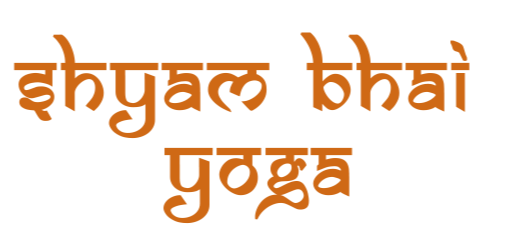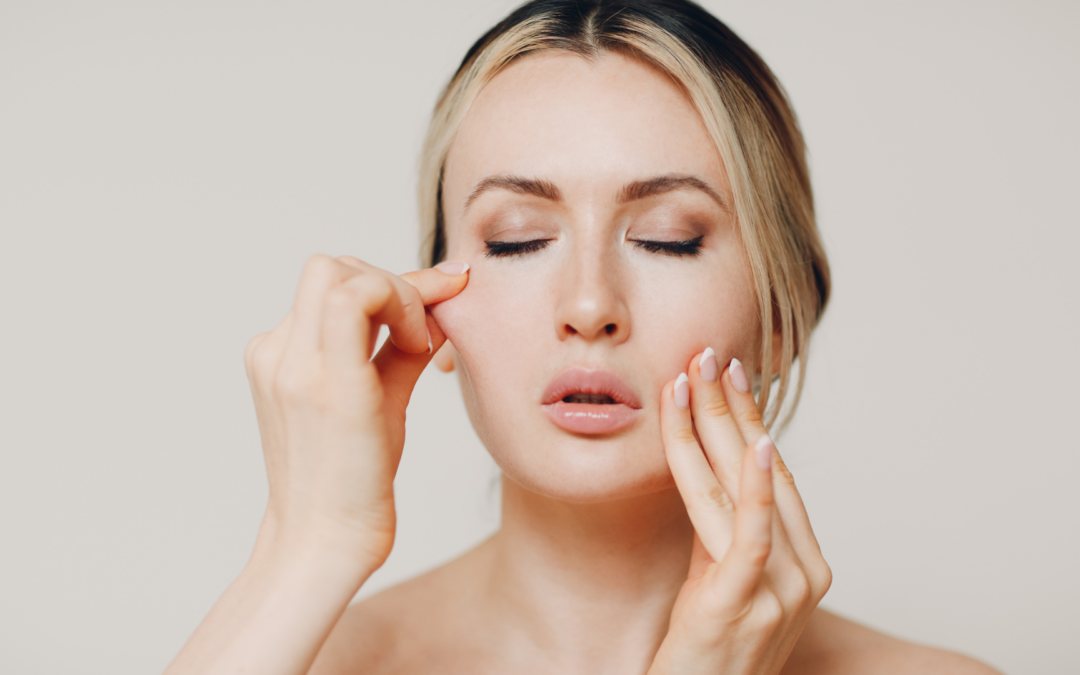As we age, one of the most visible changes occurs in our facial skin—the gradual loss of elasticity, firmness, and tone that leads to sagging and laxity. While the beauty industry offers countless interventions from topical products to surgical procedures, face yoga presents a natural, non-invasive approach to improving skin tightness through targeted exercises that tone the underlying muscles, stimulate circulation, and enhance the skin’s supportive structures. The global yoga market, encompassing practices like Face Yoga, was valued at approximately USD 136.81 billion in 2024 and is projected to reach USD 243.45 billion by 2033, growing at a CAGR of about 6.61%. Understanding how these gentle yet effective techniques work provides insight into their potential for natural skin rejuvenation.
Understanding Facial Skin Structure and Aging
Before exploring how face yoga can improve skin tightness, it’s helpful to understand the facial anatomy and aging process:
The Multilayered Foundation of Facial Firmness
Several interconnected structures contribute to skin tightness:
- Facial Muscles: Over 50 muscles form the foundation that supports skin positioning
- SMAS Layer: The Superficial Muscular Aponeurotic System connects muscles to skin
- Collagen and Elastin Network: These proteins provide structure and resilience
- Hyaluronic Acid: Natural moisture-binding molecules that create volume
- Facial Fat Pads: Strategic fat compartments that create youthful contours
How Aging Affects Skin Tightness
Multiple factors contribute to skin laxity over time:
- Muscular Atrophy: Facial muscles weaken and thin without targeted use
- Collagen Depletion: Production decreases approximately 1% yearly after age 20
- Elastin Degradation: These “bounce-back” fibers break down and aren’t replaced
- Fat Pad Migration: Facial fat shifts downward and inward with gravity
- Bone Resorption: Facial skeletal structure gradually diminishes, reducing support
The Science Behind Face Yoga for Skin Tightness
Face yoga works through multiple pathways to address these aging-related changes:
1. Muscular Toning and Development
Just as body exercises build muscle, facial exercises strengthen and tone the muscles beneath the skin:
- Hypertrophy Response: Regular resistance exercises increase facial muscle fiber size
- Neuromuscular Retraining: Improves conscious control over previously underused muscles
- Muscle Memory Development: Helps maintain improved positioning with consistent practice
- Muscular Endurance Building: Enhances the ability to maintain proper facial posture
- Facial Posture Improvement: Counteracts habitual expressions contributing to laxity
A groundbreaking 2018 study published in JAMA Dermatology found that participants who performed a 30-minute daily facial exercise program for 20 weeks showed significant improvements in upper and lower cheek fullness, with participants looking an average of three years younger at the study’s conclusion.

2. Increased Circulation and Oxygen Delivery
Face yoga significantly enhances blood flow to facial tissues:
- Microcirculation Activation: Exercises increase blood flow to skin’s superficial layers
- Nutrient Delivery Enhancement: Better blood flow brings more building blocks for collagen and elastin
- Waste Removal Acceleration: Improved circulation helps clear metabolic byproducts
- Cellular Oxygenation: More oxygen reaches cells, supporting optimal function
- Lymphatic Drainage: Reduces fluid retention that can exacerbate the appearance of sagging
These circulatory improvements create healthier tissue conditions supporting natural tightening processes.Specialized Online Face Yoga Classes provide structured guidance in proper technique, targeted sequences, and appropriate progression to support natural skin tightening with expert instruction in the specific techniques most effective for different facial areas and concerns.
3. Collagen and Elastin Stimulation
These exercises may help activate the skin’s natural protein production:
- Fibroblast Activation: Mechanical stimulation may trigger these collagen-producing cells
- Protein Synthesis Signaling: Movement creates microstress that signals repair mechanisms
- ECM (Extracellular Matrix) Support: Helps maintain the scaffolding between cells
- Cross-Linking Improvement: May enhance the structural integrity of existing collagen
- Growth Factor Release: Physical stimulation may trigger rejuvenating compounds
While more research is needed, preliminary studies suggest that mechanical stimulation influences dermal protein synthesis pathways.
4. Tension Pattern Release
Chronic facial tension contributes to wrinkles and sagging that face yoga addresses:
- Habitual Expression Patterns: Releases unconscious holding patterns creating lines
- Jaw Tension Reduction: Alleviates clenching that contributes to lower face heaviness
- Stress-Related Holding: Addresses tension from emotional and physical stress
- Fascial Adhesion Release: Helps free stuck connective tissue affecting skin mobility
- Proper Muscle Recruitment: Teaches balanced facial muscle use preventing overuse lines
This tension release creates a more balanced foundation supporting natural skin positioning.
Also Checkout How Does Face Yoga Help in Reducing a Double Chin?
Most Effective Face Yoga Techniques for Skin Tightening
Certain exercises specifically target areas prone to laxity:
1. Forehead Firming Techniques
These exercises address brow heaviness and forehead laxity:
a) Smooth Brow Lift
This exercise counteracts descending brow position:
- Place index fingers horizontally under each eyebrow
- Press gently upward, creating resistance
- Raise eyebrows against this resistance
- Hold for 5-10 seconds, then release
- Repeat 10 times
Benefits: Strengthens frontalis muscle, lifts brow position, and smooths horizontal forehead lines.
b) Forehead Smoother
This technique releases tension while toning:
- Place both palms on forehead, fingers facing each other
- Apply gentle pressure while sliding hands outward toward temples
- Hold briefly at temples, then release
- Repeat 10 times with smooth, controlled movement
Benefits: Releases forehead tension patterns, improves circulation, and helps smooth expression lines.
2. Cheek and Midface Exercises
These techniques target the apple zone where laxity becomes particularly visible:
a) Cheek Sculptor
This resistance exercise builds cheek volume:
- Smile with lips closed
- Place index fingers on top of cheek muscles
- Apply gentle pressure while holding smile
- Hold for 15 seconds, then release
- Repeat 3-5 times
Benefits: Strengthens zygomaticus muscles, restores cheek projection, and improves midface contour.
b) The Cheek Lifter
This more advanced exercise creates enhanced toning:
- Open mouth into an “O” shape
- Fold upper lip over teeth
- Smile to engage cheek muscles while maintaining “O”
- Hold for 10 seconds
- Repeat 5 times
Benefits: Creates significant cheek muscle engagement, improves overall midface positioning, and enhances natural contour.
3. Jawline and Neck Tightening
These exercises target the lower face and neck regions where laxity often appears first:
a) Jaw Sculptor
This technique addresses jawline definition:
- Tilt head back, looking at ceiling
- Press tongue firmly to roof of mouth
- Swallow while maintaining tongue position
- Repeat 10-15 times
- Perform 2-3 sets
Benefits: Tones submental (under-chin) area, strengthens platysma muscle, and improves jawline appearance.
b) Neck Toner
This exercise addresses neck laxity contributing to lower face appearance:
- Sit with spine tall, shoulders relaxed
- Press lips firmly together
- Tilt head back 45 degrees
- Keep lips pressed, creating tension in neck
- Hold for 10 seconds
- Repeat 5 times
Benefits: Strengthens platysma muscle, improves neck-jawline transition, and addresses “turkey neck” concerns.

Creating an Effective Face Yoga Practice for Skin Tightening
For optimal skin-tightening results:
1. Consistency and Progressive Training
Just like body fitness, results depend on regular practice:
- Begin with 10-15 minutes daily for best results
- Focus on proper form over repetition count
- Gradually increase hold times as strength develops
- Track progress with photos under consistent lighting
- Expect initial results within 2-3 weeks, with more significant changes after 2-3 months
2. Combined Approach Integration
Face yoga works best within a comprehensive skin health regimen:
- Pair with proper hydration supporting skin elasticity
- Maintain consistent sun protection preventing elastin damage
- Include antioxidant-rich nutrition supporting collagen production
- Ensure adequate sleep when skin repair is most active
- Consider complementary approaches like gua sha or facial massage
3. Technique Refinement and Progression
Professional guidance ensures optimal form and results:
- Begin with basic movements, mastering form before advancing
- Understand the targeted muscles for each exercise
- Avoid excessive force that can create adverse tension
- Focus on quality of movement rather than quantity
- Adapt exercises as skill and facial tone improve
Expert Guidance for Optimal Results
While self-practice offers benefits, professional instruction ensures proper technique for maximum skin-tightening results.
For those seeking a holistic approach to facial rejuvenation within overall wellness practice, comprehensive Online Yoga Classes offer integrated programs addressing the mind-body connection that influences facial appearance through stress reduction, proper breathing, and overall vitality.
Beyond Exercises: Holistic Factors Supporting Face Yoga Results
Several complementary elements enhance face yoga’s skin-tightening effects:
Stress Management for Collagen Protection
Stress hormones directly impact skin firmness:
- Cortisol breaks down collagen and elastin
- Stress increases muscle tension creating lines
- Anxiety triggers inflammatory processes affecting skin
- Sleep disruption from stress reduces repair processes
- Face yoga’s mindfulness component helps counteract these effects
Hydration and Nutrition Support
Internal factors significantly impact skin tightness:
- Adequate water intake improves skin hydration and plumpness
- Antioxidant-rich foods help protect existing collagen
- Vitamin C supports new collagen synthesis
- Omega-3 fatty acids help maintain skin membrane integrity
- Limiting sugar prevents glycation that stiffens collagen fibers
Mindful Facial Habits
Daily awareness complements formal practice:
- Becoming aware of tension-holding patterns
- Reducing repetitive expressions creating fixed lines
- Maintaining proper tongue position supporting midface
- Practicing proper posture that affects facial positioning
- Implementing mini face yoga moments throughout the day
By understanding the multifaceted ways face yoga addresses the underlying causes of skin laxity—muscular atrophy, circulation deficits, structural protein loss, and tension patterns—practitioners can approach this natural method with realistic expectations and appreciation for its comprehensive benefits beyond mere appearance, enhancing overall facial vitality while improving skin tightness through consistent, mindful practice.
Inquiry
If you have any questions, please feel free to reach out. We’ll be glad to help!

